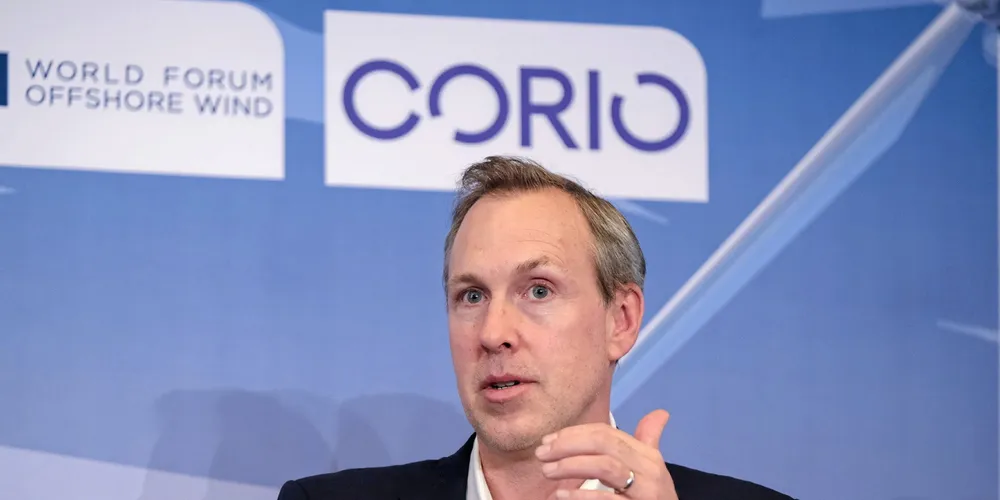Vestas US offshore wind SVP warns common market needed to avoid sector 'boom and bust'
Turbine giant tells Recharge Summit that climate legislation will propel investment but collaboration across states and projects will be key to 'filling factories year after year' as regional play grows

As the US offshore wind sector scrambles to develop a supply chain equal to the task of building out a gigascale fleet off its coasts, a top executive at Danish turbine maker Vestas has warned that the even greater concern will be “keeping factories filled” for the decades ahead as the sector takes shape.
Vestas’ biggest apprehension looking ahead, said Josh Irwin, senior vice president for the OEM’s offshore business unit in America,“is not how do we get the factory started, but how are we going to keep it full year after year without boom and bust”.
The US supply chain is being rolled out on a state-by-state basis primarily based on power purchase agreement (PPAs), with investment in factories and ports tied to 20-year PPAs despite the fact, Irwin added, that “no one state can support a manufacturing facility on its own.”
A common market would drive higher “overall economic gains to the individual states”, he argued.
IRA bringing ‘enthusiasm and certainty’
The “certainty” this would provide the nascent sector, Nick Prokopuk, offshore wind business developer for TotalEnergies, added, would “allow developers to initiate multibillion dollar projects [which would] cascade down [to finance development of ] the supply chain and workforce”.
Manufacturing tax credits in the IRA have a “shelf-life”, however, warned Irwin, noting their value starts to step down at the end of the decade.
“This window right now where we can get to this common market, we can get the infrastructure in place that's going to play in favour of localisation, is critical,” he said. “We can’t let that opportunity pass.”
Transmission ‘assumed to be there’
Crucially, as several panellists noted, the IRA doesn’t include investment tax credits (ITC) for grid capacity, a deficit Andy Geissbuehler, CEO of transmission infrastructure developer Atlantic Power, sees as a historic issue embedded in the industry’s approach to power network development.
“Transmission comes last, that is how the [renewable energy] industry has worked for the last 20 years,” he said. “We never worried about transmission: we know it’s complicated, and we assume it is there.”
That “won’t help” the industry advance, he stated, and will likely create even more problems down the line for the national power transmission network that will require costly fixes.
Incorporating gigascale offshore wind production into the grid will need unprecedented power infrastructure at the point of interconnection as well as upgrades to transmit the power to load centres, Geissbuehler stressed
Permitting timelines are even longer for high voltage direct current (HVDC) lines than for the projects themselves, he said, and by the time a developer “kicks off the generation project, they’re already a year late to secure transmission”.
“Any rectification is always inefficient and costs money,” Geissbuehler said. “If you want to de-risk a project, you need to take action early.”
“Taking action” means planned, coordinated grid upgrades across states and projects that can “enable the 50GW-plus we need on the east coast,” he said. “It will not work otherwise.”
Geissbuehler flagged that these investments will not match demand, noting that the US will be “competing with a global rush for offshore wind transmission” construction, and urged ramping up of the grid-oriented supply chain.
“That’s really the leadership challenge for industry and governments,” he said. “Get this supply chain booked.”
Port capacity
Even with policy certainty and generous government incentives, the US supply chain is still set to struggle with a lack of port capacity for the first wave of offshore wind projects in the Atlantic.
Offshore wind components are of size that means they need to be manufactured at or adjacent to the same ports from which projects are marshalled. But while eight large scale windports are under development on the eastern seaboard, today none in the northeast, amid dense populations and costly coastal real estate, is ready to start full-scale operations.
The NJWP will be the US’ largest purpose-built offshore wind port with over 200 acres of capacity when completed in 2026 and has already attracted the interest of Vestas and GE for turbine assembly and manufacturing but will still be insufficient for the entire 30GW buildout.
“There’s going to have to be a concerted effort that involves not just bringing on additional acreage but other tools to manage port capacity to avoid bottlenecks,” he said.
“Coordinated sequencing, across projects and across states, holds the key to potentially mitigating this bottleneck,” he said.
(Copyright)